6 Essential CMS Capabilities for a Better Content Governance Strategy

Learn how the magic of roles, permissions and workflows in Sitefinity can help you roll out a better content governance strategy.
In this blog post we will talk about some of the key capabilities your Content Management System (CMS) should boast as you implement a content governance strategy for your organization.
We will discuss:
- The importance of content ownership
- Why we believe that User Roles and Permissions are not there to restrict writers, but help them focus on what they do best
- How CMS Workflows foster productivity and ensure better brand consistency and voice across multiple properties and channels
- Why you should leverage a staging environment to develop content and how to publish on your live website without the help of IT
- How advanced logging capabilities and a built-in Trail Audit module can help you keep things in sight
Content management systems such as Sitefinity can empower more people in your organization to be able to create, author and even own content. As a business stakeholder, your ultimate goal is to enable both subject matter experts and professional writers to unlock their true potential and deliver compelling content.
Content is still King. Well, data is catching up, but that’s another story.
Whether you have just hired your first full-time employee or have acquired a profitable business, odds are you will need to build and execute a content governance strategy in your organization. Beyond the obvious—the ability to create or clone existing content, save your work as a draft, lock items while they’re being edited, schedule publishing (and unpublishing)—Sitefinity provides a host of advanced features and capabilities designed to help you deploy a content governance strategy that fits your needs.
When it comes to creating, authoring and publishing content online, informal agreements may not work. Clearly defined roles, permissions, content ownership and approval workflows, however, always do.
Small or medium-sized businesses will have different content needs and internal processes than the ones of the marketing department of a global financial institution. News agencies, TV and online media play in a league of their own when it comes to content management, governance and workflows.
Which Side of the Fence are You On?
Sitefinity comes bundled with a number of capabilities to ensure that content creators can really focus on creating content, improve various KPIs and, ultimately, be triumphant.
Site administrators on the other hand, as well as product line managers, heads of marketing departments, or even C-suite management will look at the entire process from a slightly different point of view. Accuracy, brand and voice, consistency and integrity are some of the line items on their agenda.
-
Content Ownership
The CMS your organization employs should enable you to assign ownership to anything from individual content blocks, static pages and dynamic content, to documents and files, images, or even contact forms. Whether this is a single person, or multiple team members functionally grouped in a role, you may want to split your website in sections, much like your org chart or the branches of the tree, and assign content ownership.
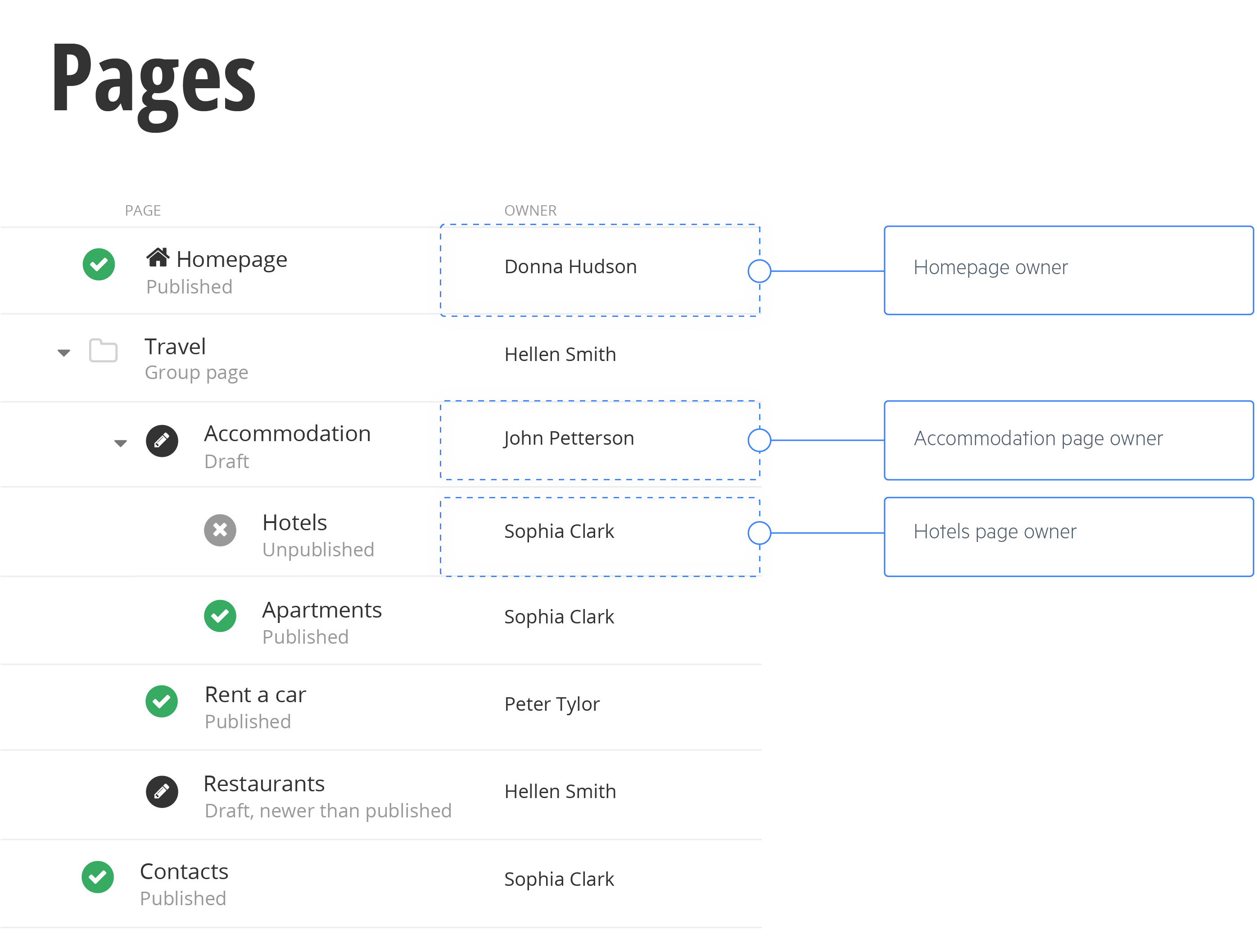
-
Functional Roles
Having a single content owner for bigger chunks of your website brings with it a couple of considerations. What if this person went on vacation to Hawaii as a stop before they went on to explore the Himalayas? With your content owner away, day-to-day operations may be impacted and IT will be required to step in and deal with content management issues from time to time. Balance is key, so grouping owners in functional teams or roles might be a better idea, instead of assigning a single owner to big parts of your website.
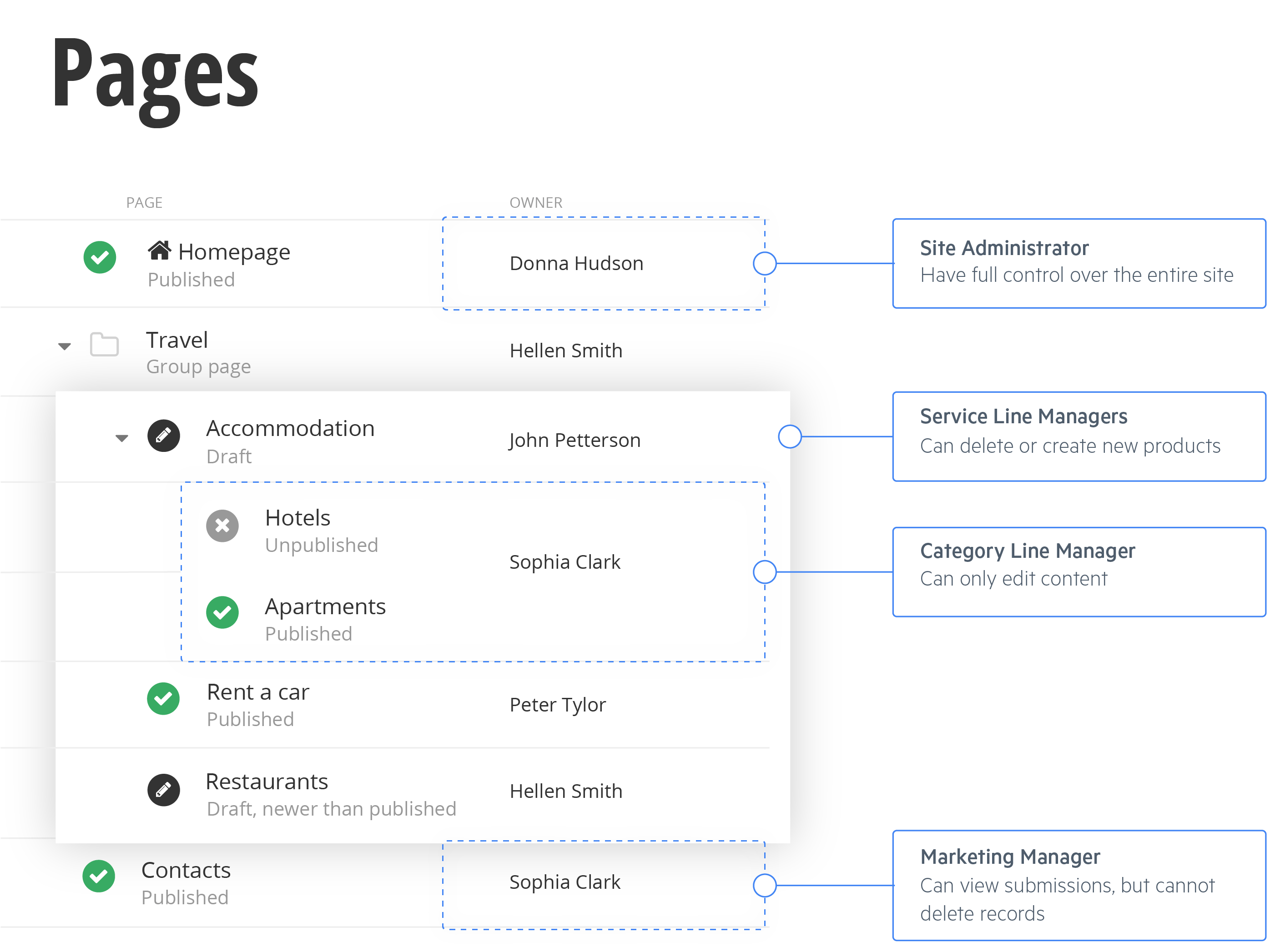
That way, you can have as many roles as needed that cater for everyone on your team—from the summer intern, to the proofreader, designer, frontend developer, or even the head of marketing.
Fine-tuning access to dynamic content modules, static pages, resources, image libraries, shared content blocks, design templates, languages and sites becomes a breeze.
-
Access Permissions
Even if you group users into functional units, there is always the problem of different skill levels. Sitefinity is a very forgiving content management system, and according to our users it’s one of the easiest systems to use with a very gentle learning curve and quick onboarding. Still… Do you really want to enable your interns to update your corporate home page? What if they posted an image of a kitten to the main page of your publicly traded organization? The granularity of permissions that Sitefinity offers ensures that users only get access on a “need to” basis, thus protecting your organization’s brand consistency and content integrity and quality.
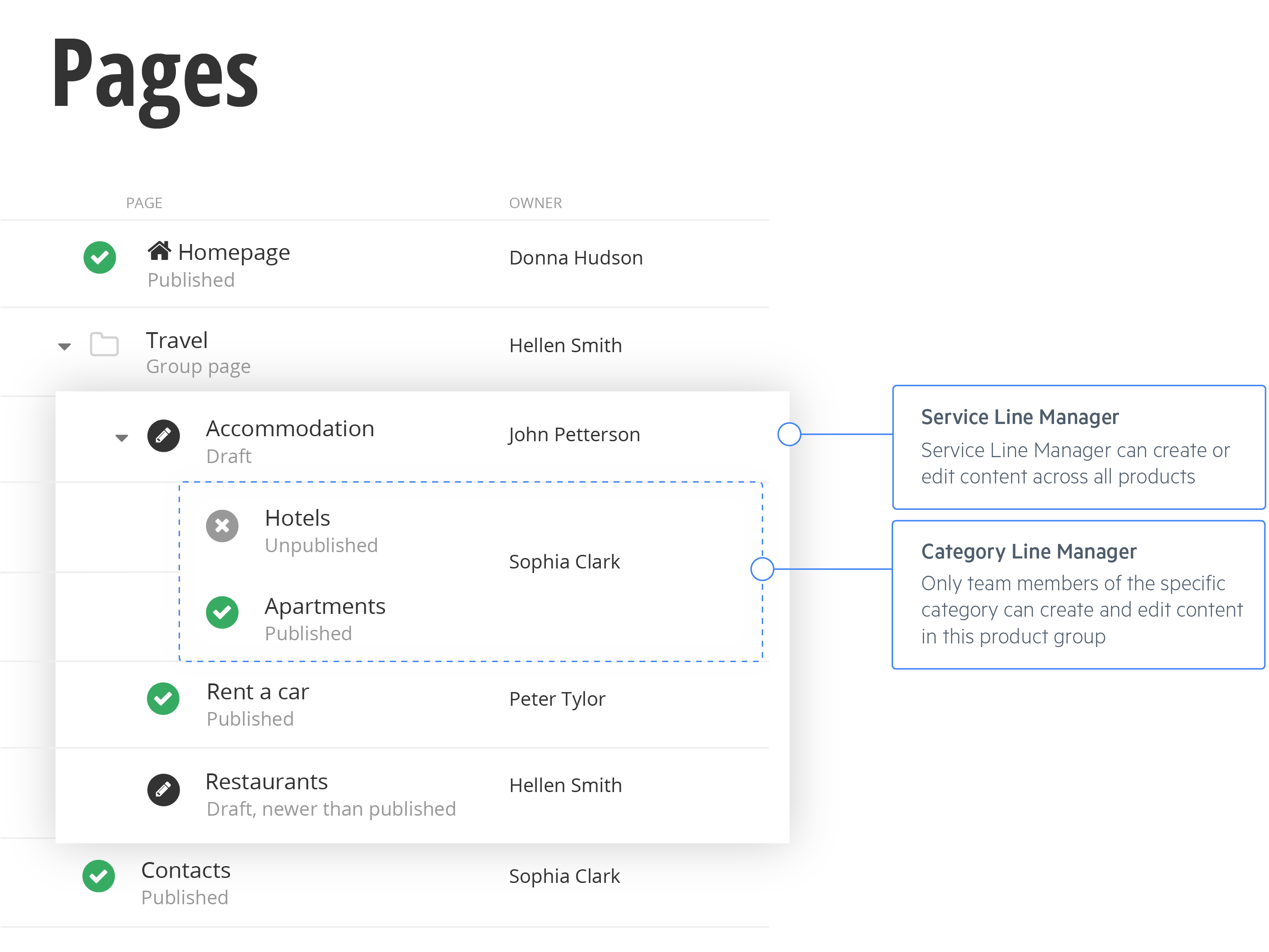
Sitefinity can help you fine-tune access, so you not only allow content contributors to create and update content, but also restrict them from fiddling with page templates, or adjusting the settings of dynamic widgets. Contrary to what you may think, most CMS users really appreciate the fact that their access to specific functionalities or pages is restricted. Sort of keeps their life in balance.
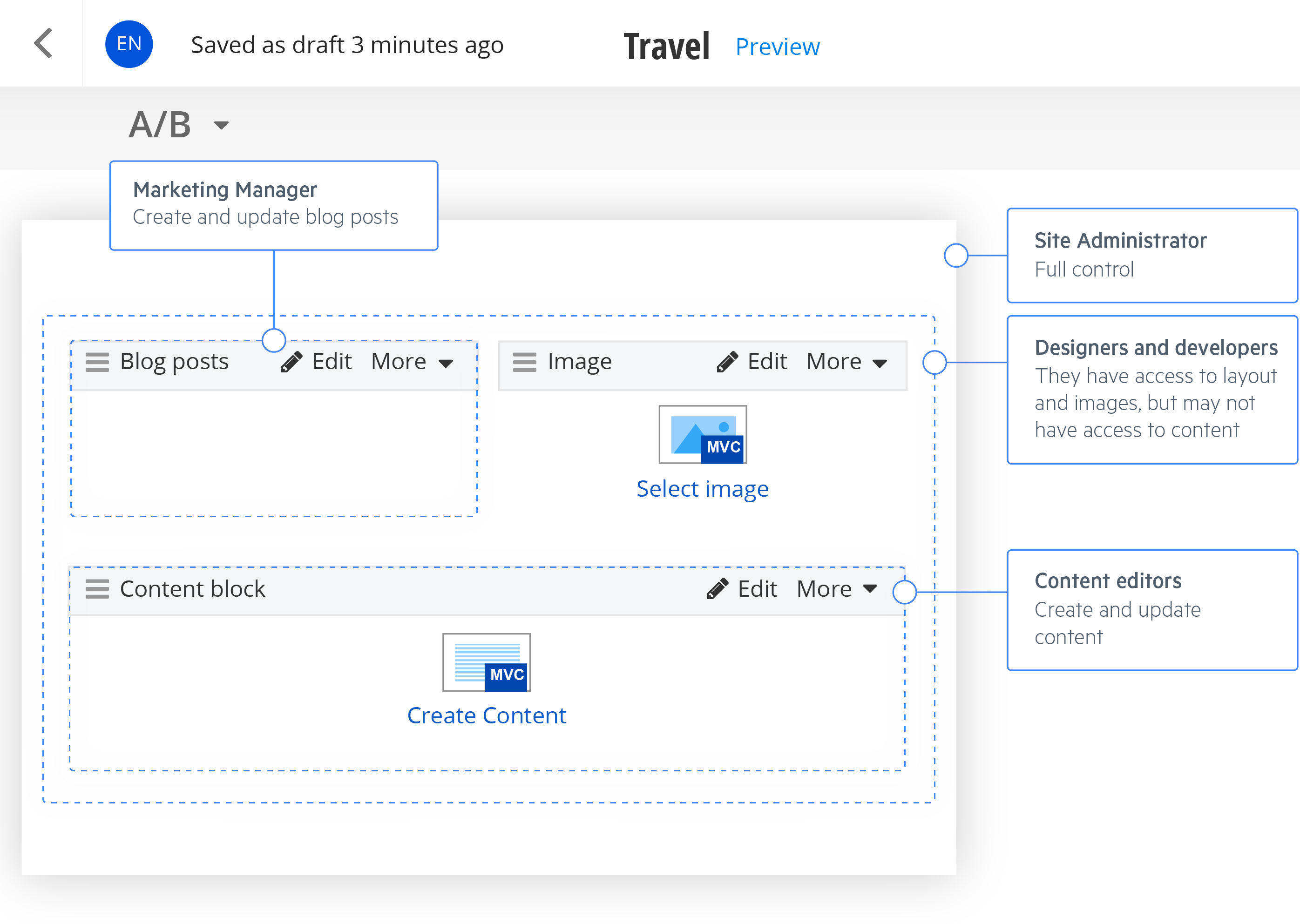
The ability to set granular permissions also ensures that sensitive data, such as contact form submissions, is also protected and only accessible to specific roles OR even specific team members within a role.
Sitefinity provides tools to fine-tune user access to specific content types and pages.
-
Content Management Workflows
If you’re a one man show, and you only maintain a personal travel blog for example, odds are you do not need workflows enabled in your content management system. Hire a helping hand though, in an effort to increase your content output, and suddenly you might need to implement a workflow. Most of the time, keeping articles as a draft will do the trick, until they are ready to go live. You will however want to make sure that you have read and approved the work of your external contributors or your in-house writers before it goes live.

Sitefinity provides workflows up to three levels deep for the ultimate piece of mind.

-
Content Synchronization, Continuous Delivery and Continuous Integration
Long gone are the days when you would need dozens of engineers to send several thousand emails as part of your cutting-edge digital marketing strategy. Now you can do it with the push of a button. Likewise, with Sitefinity, it is easier than ever to push all your content, including dependencies such as images and page templates, from your staging environment to your live website. No longer do you need the help of IT—which means they can remain happily occupied with continuously delivering functional improvements to your website.

Sitefinity CMS supports content synchronization between testing and live environments and CI/CD out of the box. SiteSync is integrated with the workflows and the relevant permissions can be applied to it. That means you, as a decision maker, can rest assured that only a select few have the power and the privilege to act upon the marketing launch plan and let the world know about your brand new product offering.
-
Audit Trail
Often users will perform actions in the CMS that might compromise the stability, performance, brand consistency and even security of your site. Enabling the built-In Audit Trail module in Sitefinity gives you access to advanced logging capabilities that can later be used to trace back certain actions to a specific system user.
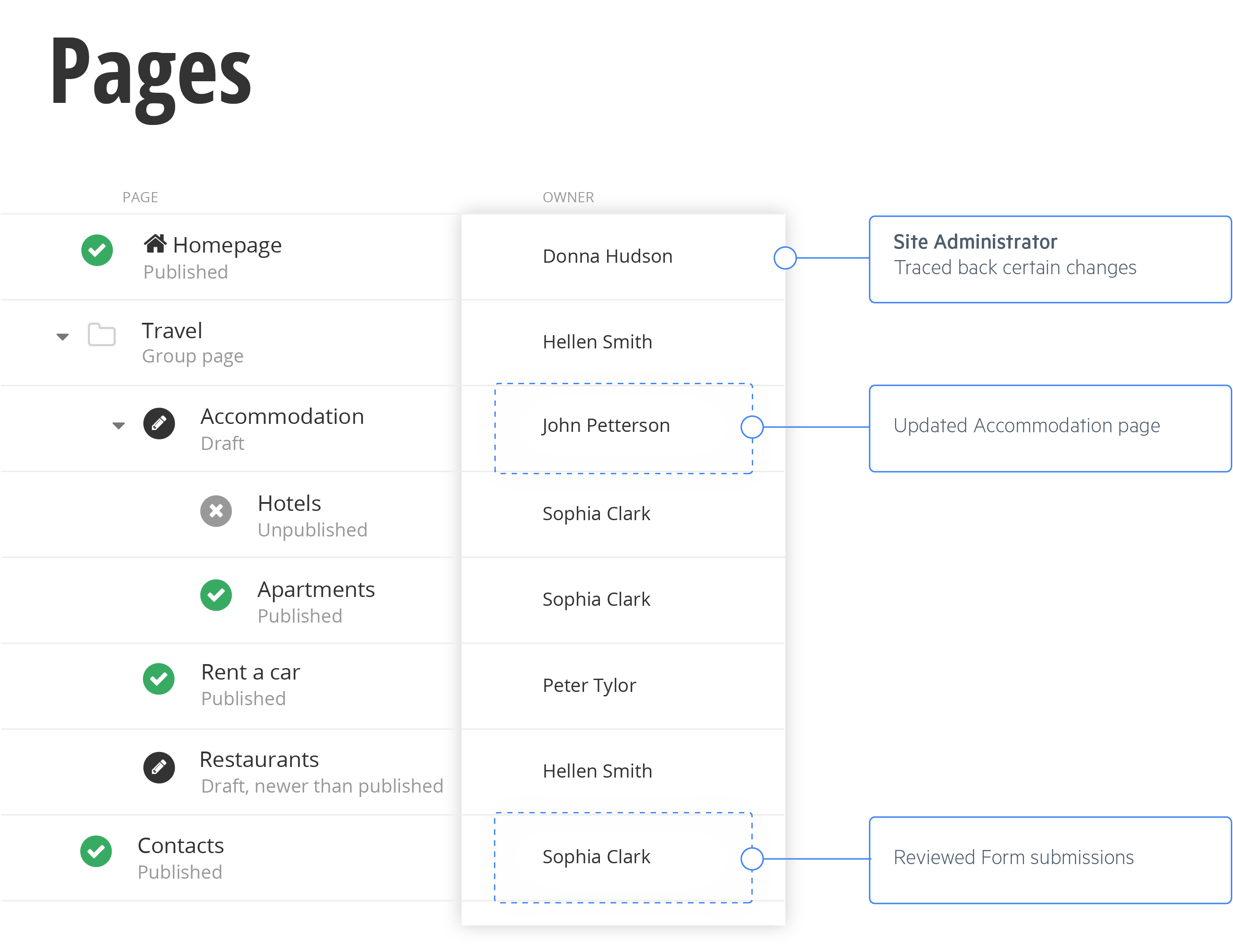
Much like editors need access to previous version of their content, site administrators will appreciate the visibility that the Audit Trail module provides.
Putting it All Together
Sitefinity provides a host of features designed to help your content creators be more productive and empowered without compromising security or platform stability, and without relying on IT for day to day content management tasks.
Here is a summary of some of the features that can become a staple of your content governance strategy:
Content Ownership
- Enables site admins to assign owners to specific pages or branches of the website
- If you do not implement: Content integrity, brand consistency or even SEO may be affected with many people being able to create, modify or delete key pages from the system
User Roles
- Enables the grouping of multiple users in functional roles, such as designers, editors, authors, and approvers, to enable more efficient management of content items in the backend
- If you do not implement: Managing users and access to certain resources could become a burden—lack of visibility into users with access to the backend could affect content integrity, productivity and operational efficiency
Per-Page/Per Module Permissions
- Enables you to fine-tune access to specific content types, or layout blocks, to enable multiple team members to have control over certain website pages without affecting each other’s work
- If you do not implement: End-users such as editors may be able to adjust the settings of dynamic widgets, or content blocks that are shared on multiple pages, which are normally reserved for more technical staff
Workflow
- Enables site admins to set workflows up to three levels deep to ensure better accuracy, maintain brand/voice, and make sure that no piece of content incorrectly advances to the next stage of the content governance strategy
- If you do not implement: Users might be able to update key pages without messaging being reviewed by content owners or management, potentially resulting in poor quality content being published
SiteSync
- When enabled and properly configured, site admins ensure improved content governance thanks to the ability to preview and approve content on staging servers before it is released on the live website—also, enabling select groups of users to sync content between environments reduces reliance on IT, who can focus on continuously delivering new functionalities (CI/CD)
- If you do not implement: Updating content on the live website can result in poor content quality, may affect site performance and integrity, and could lead to loss of content
Audit Trail
- When enabled, this module provides visibility and logging of user actions that have led to a potentially negative outcome—site admins are able to trace back certain results to specific user actions on top of implementing best practices (roles, permissions, workflows and even revision history)
- If you do not implement: You’ll have a limited visibility of user actions in the CMS
Where to Go from Here
- Get a demo and have one of our sales engineers walk you through Sitefinity’s content governance capabilities
- Review the Sitefinity Documentation to learn how to create roles, set permissions and workflows and how to fine-tune access to specific content and media items
Final Thoughts
Whether you manage a single website, or deliver content through multiple channels, the ability to fine-tune access to different content types and parts of the website translates in greater accuracy, improved productivity, brand affinity and ultimately… a happy sales path.
Schedule Your Demo or sign up for our a free course designed to help developers and site managers who have little to no experience in developing against Sitefinity to get up to speed. Sign up here,
